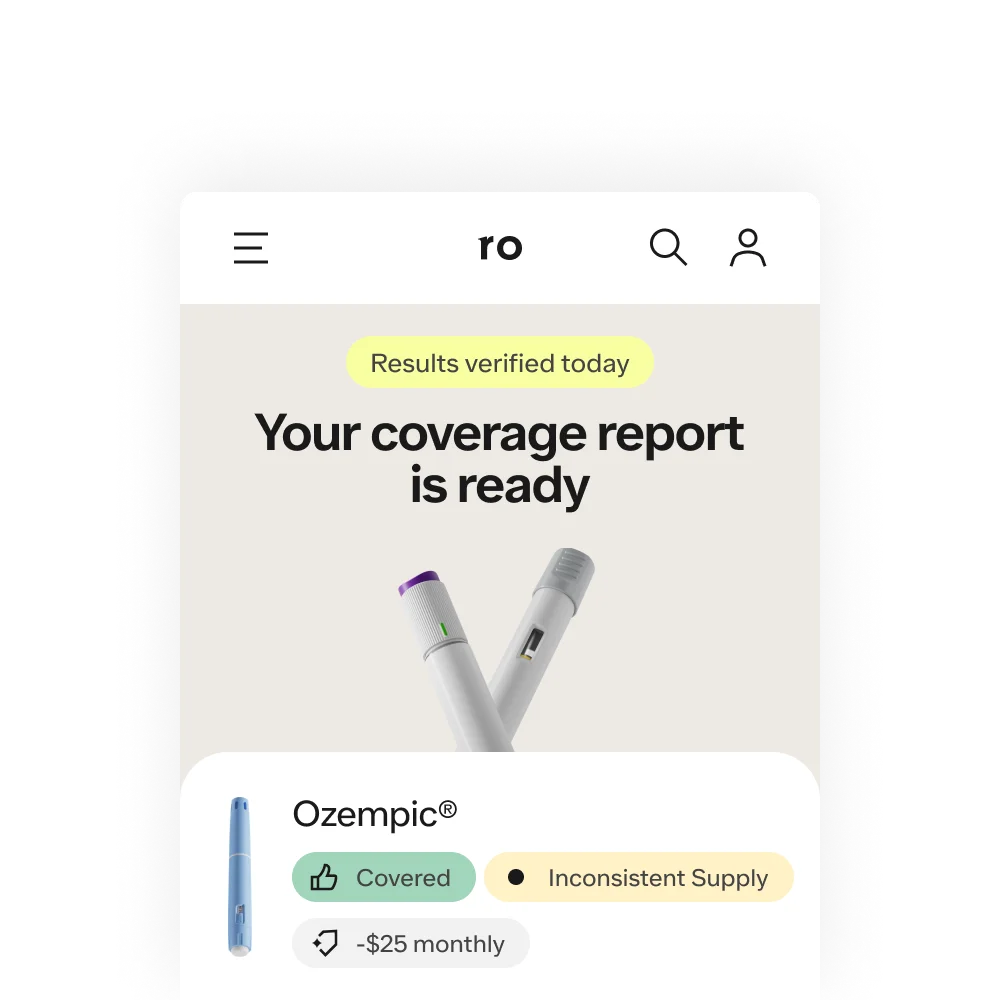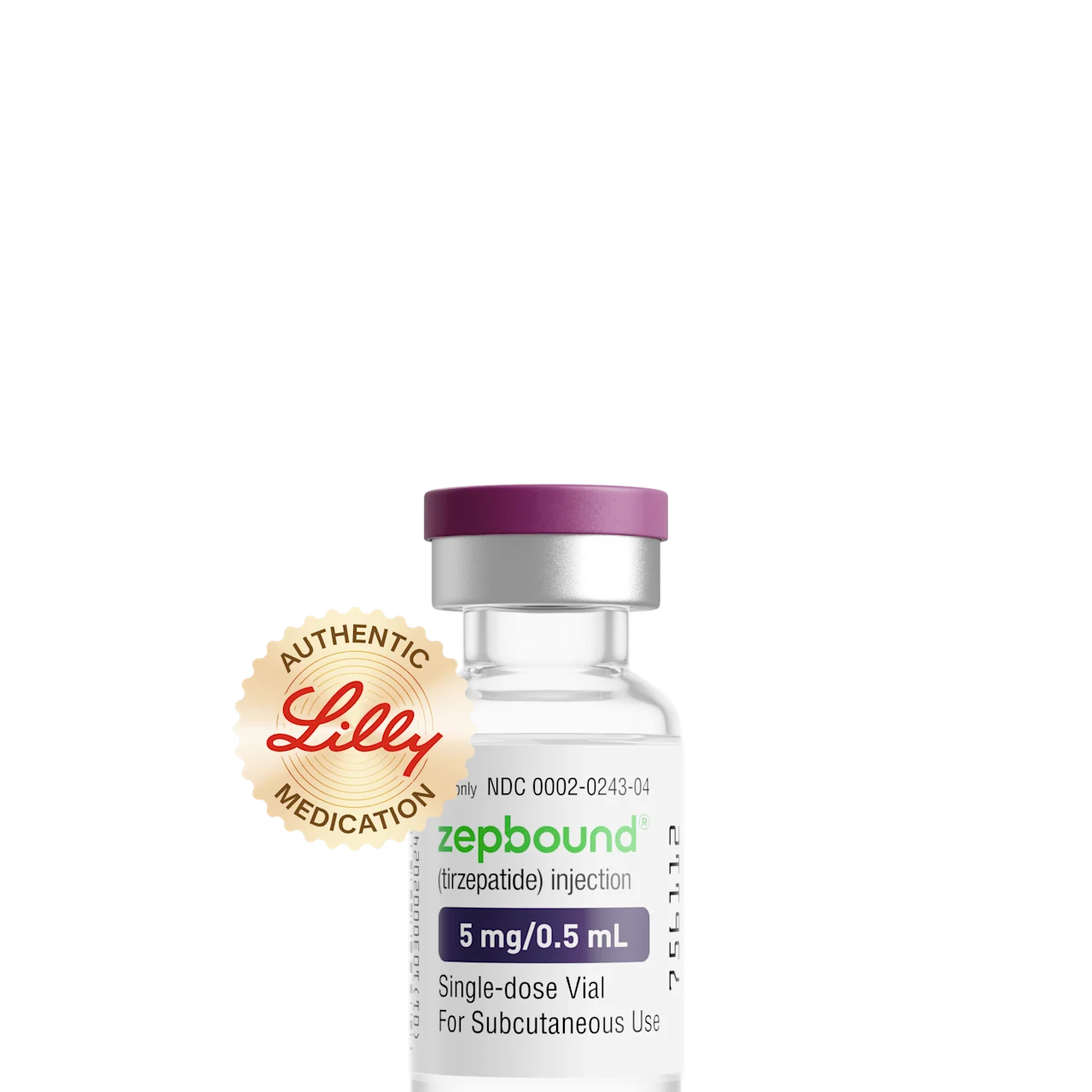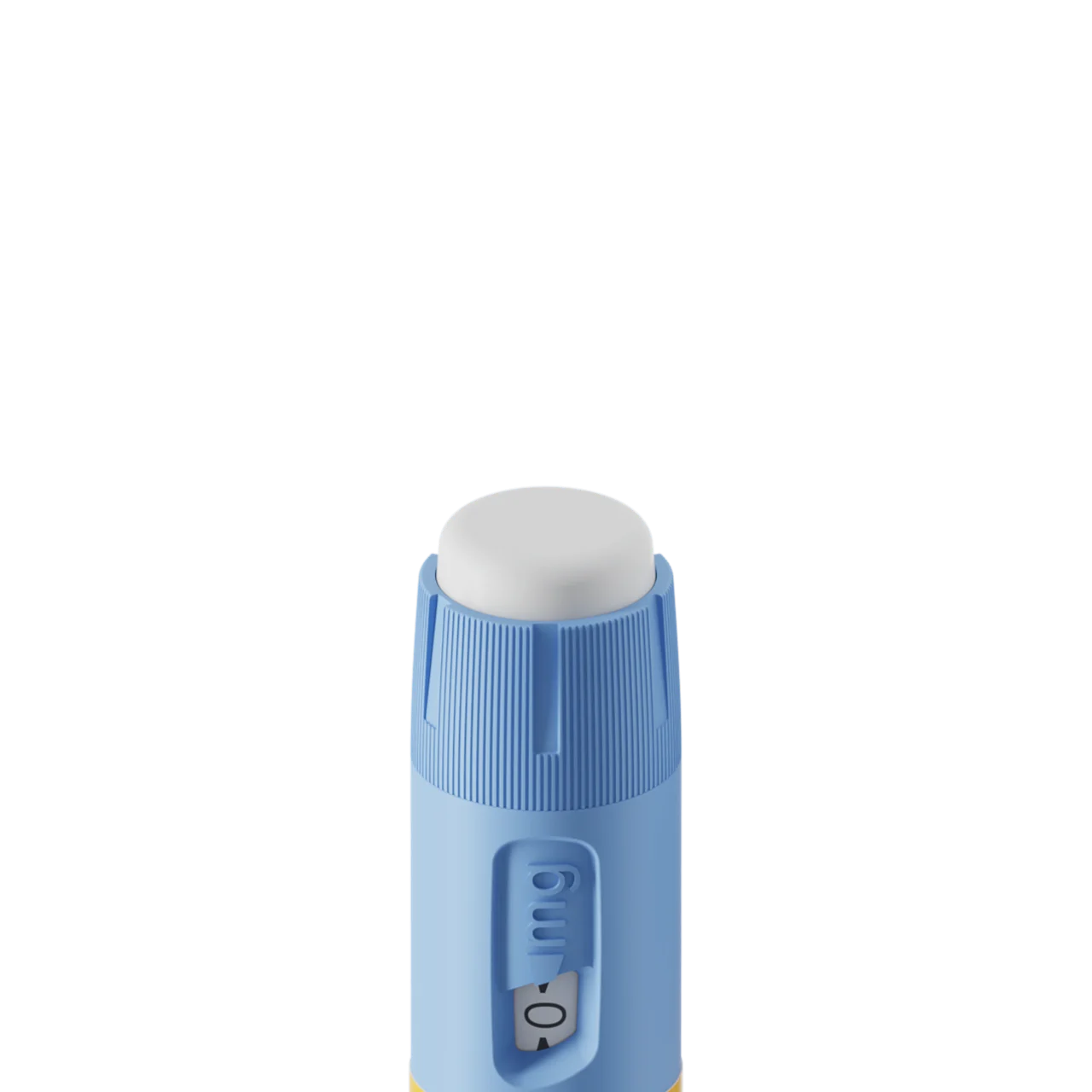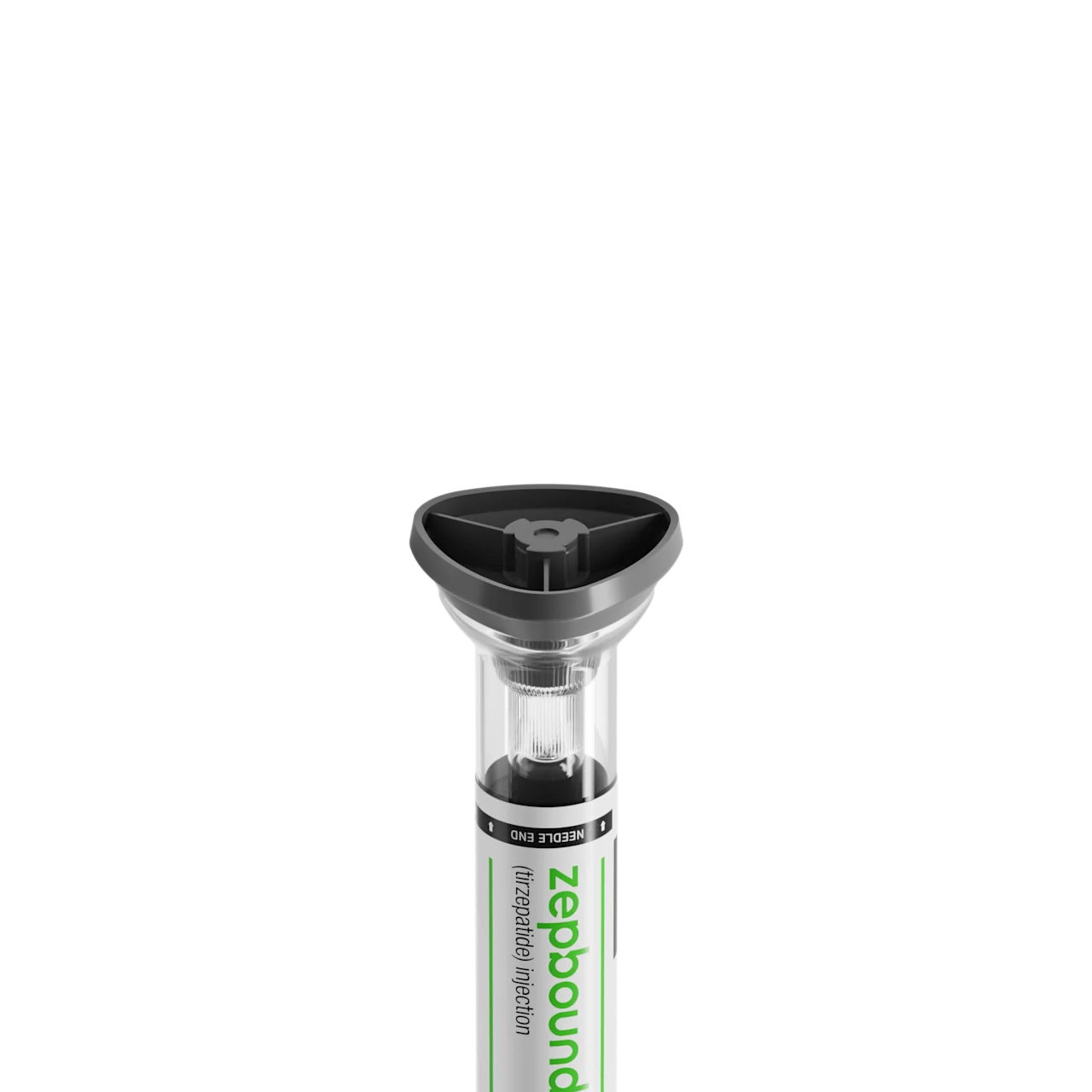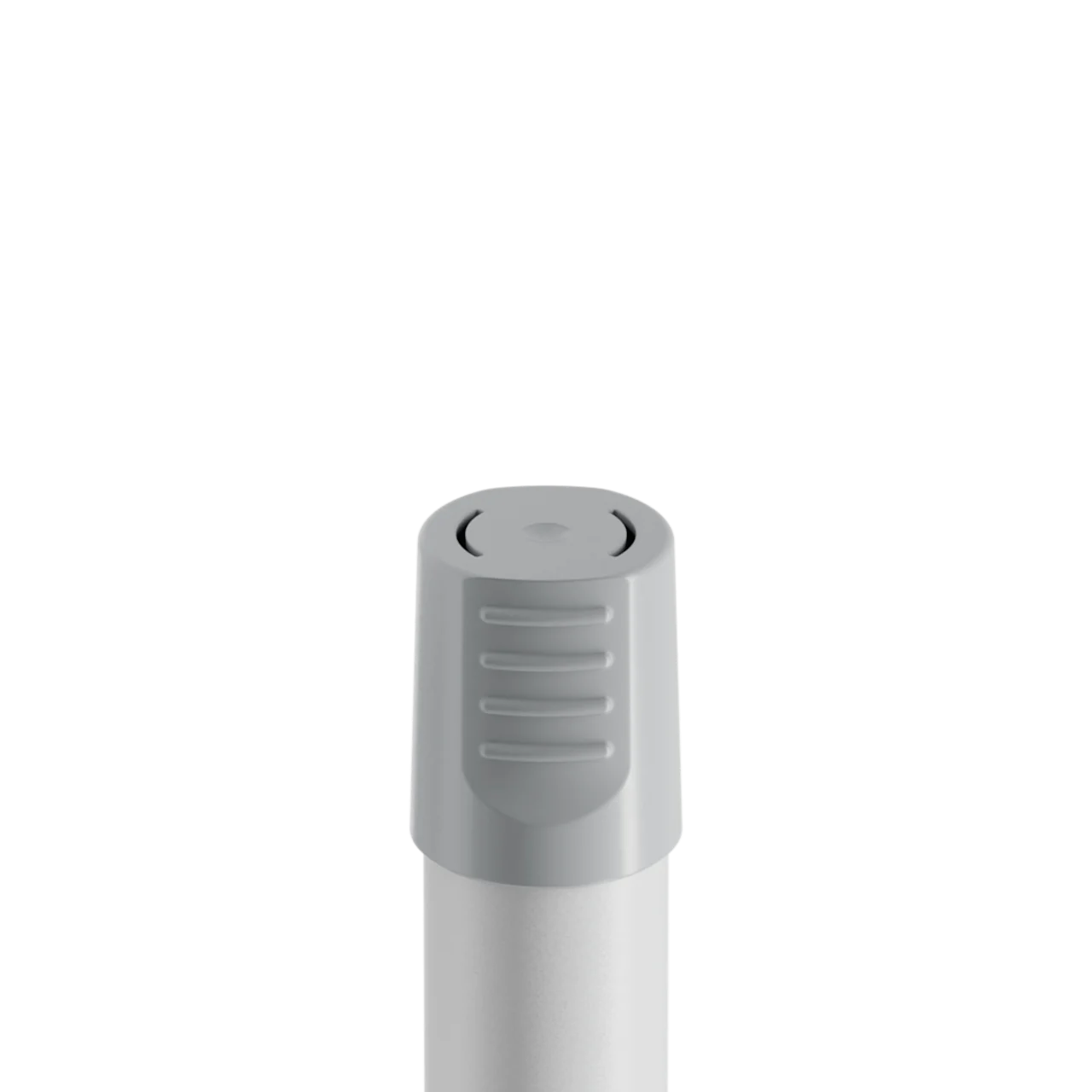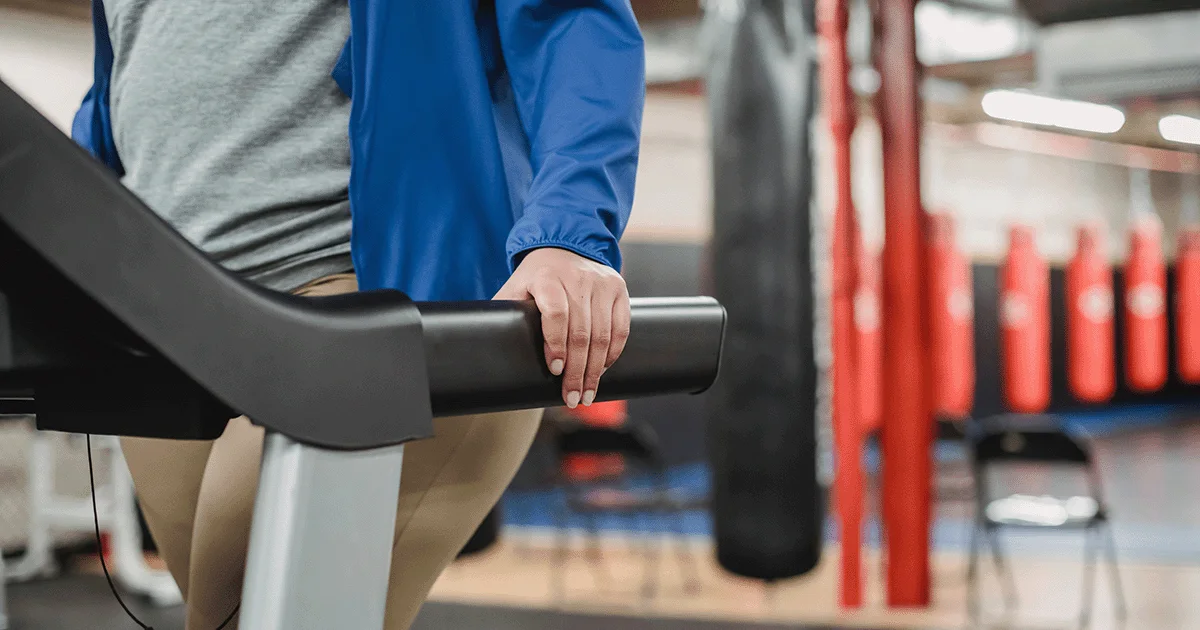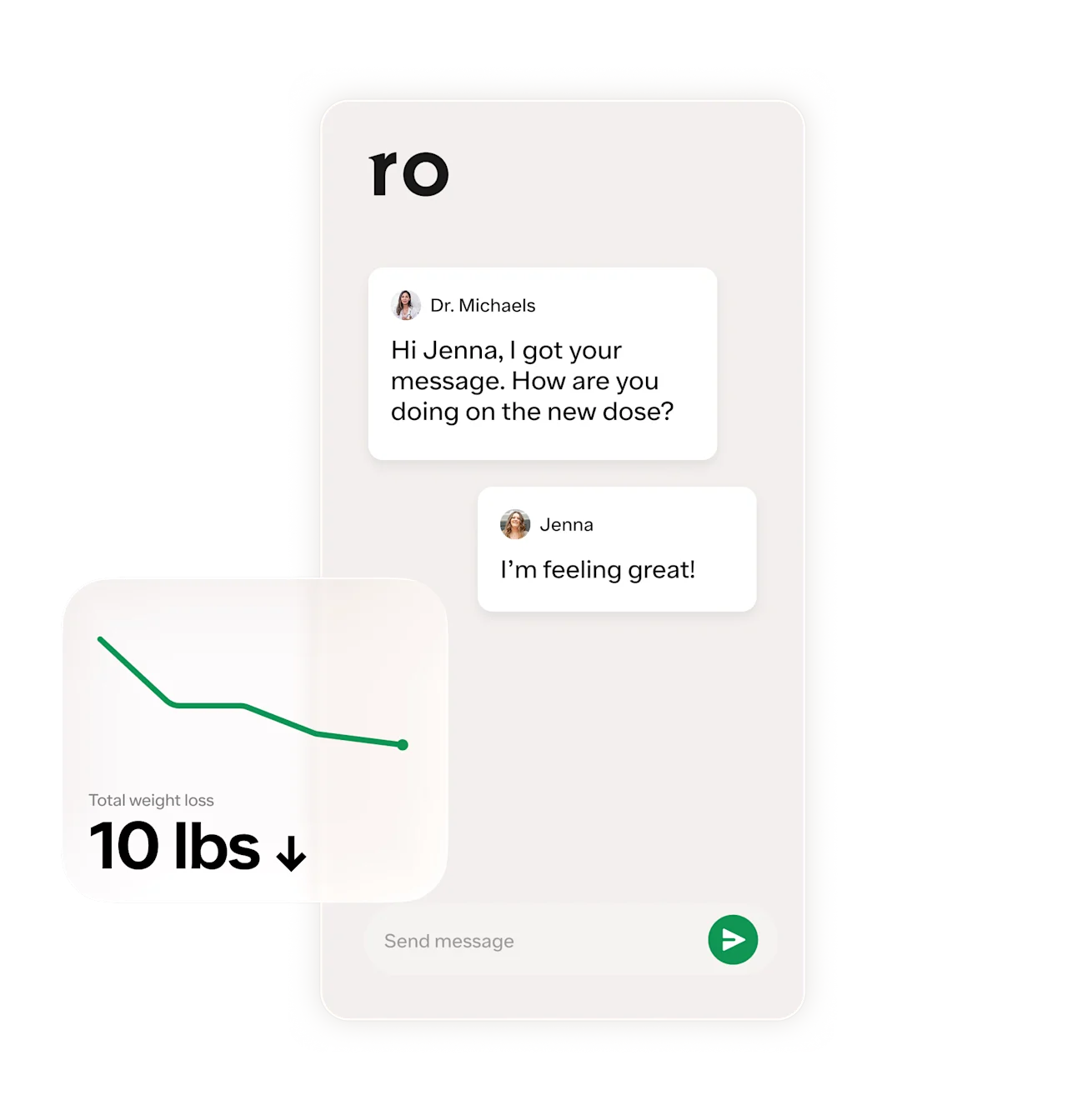Key takeaways
The US Food and Drug Administration (FDA) approved a generic Victoza in December 2024.
Simply known as liraglutide (the name of the drug’s active ingredient), this marks the first generic version of Victoza and one of the first generic versions of a GLP-1 to receive FDA approval.
Now that a Victoza generic is available, people can get access to the drug for a much lower price than other GLP-1 medications.
Liraglutide mimics the gut hormone GLP-1 to manage type 2 diabetes and promote weight loss, but it’s less effective than newer GLP-1 medications like semaglutide and tirzepatide.
Here's what we'll cover
Key takeaways
The US Food and Drug Administration (FDA) approved a generic Victoza in December 2024.
Simply known as liraglutide (the name of the drug’s active ingredient), this marks the first generic version of Victoza and one of the first generic versions of a GLP-1 to receive FDA approval.
Now that a Victoza generic is available, people can get access to the drug for a much lower price than other GLP-1 medications.
Liraglutide mimics the gut hormone GLP-1 to manage type 2 diabetes and promote weight loss, but it’s less effective than newer GLP-1 medications like semaglutide and tirzepatide.
For a few years now, GLP-1 drugs like Ozempic and Wegovy have dominated the headlines—both for their powerful effects on blood sugar control and weight loss, and for their high cost. Typically, these medications cost upwards of $1,000 per month without insurance. But thanks to the approval of a Victoza generic by the US Food and Drug Administration (FDA) in December 2024, patients now have access to another generic GLP-1.
Liraglutide, or generic Victoza, marks the arrival of the second generic GLP-1. (The first was generic Byetta (exenatide), which received FDA approval just one month earlier). On average, generic drugs can cost up to 60% less than their brand-name counterparts. So, if you’ve been taking a GLP-1 or considering doing so, you may be wondering if switching to generic Victoza is the right move for you.
Read on as we explain what you need to know about the new Victoza generic, including how liraglutide works, typical side effects, and more.
Is there a generic of Victoza?
Yes, at long last, there is a generic Victoza. In December 2024, the FDA approved a Victoza generic, simply known as liraglutide, made by Teva Pharmaceuticals and Hikma Pharmaceuticals. Liraglutide is the active ingredient in the brand-name drugs Victoza and Saxenda, but only the Victoza version is available as a generic medication. Now that you know why you’ve been seeing “Victoza generic” all over the headlines, let’s take a closer look at the drug liraglutide itself.
Rx weight loss with Ro
Get access to prescription weight loss medication online
What is liraglutide?
Liraglutide is the active ingredient in the brand-name drugs Victoza and Saxenda. It’s also the name of the generic form of Victoza.
Victoza and its generic version are approved to control blood sugar levels in people aged 10 and older with type 2 diabetes, along with diet and exercise. Only brand-name Victoza is also approved to reduce the risk of serious cardiovascular problems (like heart attack and stroke) in adults with diabetes and heart disease.
Saxenda is approved for long-term weight management in certain adults and children with obesity or overweight, along with lifestyle changes. There’s no generic Saxenda version yet.
Liraglutide is a GLP-1 receptor agonist, which means it works similarly to other GLP-1s like semaglutide (the active ingredient in Ozempic and Wegovy) and tirzepatide (the active ingredient in Mounjaro and Zepbound).
GLP-1 stands for glucagon-like peptide-1. It’s a gut hormone that plays a role in controlling your blood sugar levels and regulating your appetite.
How does liraglutide work?
Liraglutide works by mimicking GLP-1. In its natural form, GLP-1 is released by your gut in response to food. Then, it binds to receptors located in your pancreas, central nervous system, and gastrointestinal tract, among other places, and gets to work. Specifically, that work involves increasing insulin production, limiting the release of glucagon (a hormone that raises blood sugar), and slowing gastric emptying (the process in which food moves from your stomach into the intestines). All of this can have the effect of keeping your blood sugar levels in check and helping your brain realize you’re full.
There’s only one problem. Natural GLP-1 only lasts for about two minutes before it starts to degrade in your body. The forms of GLP-1 found in medications like liraglutide and semaglutide, however, last much longer, ranging from 12 hours to almost a week. That’s what makes these medications so effective at managing type 2 diabetes and obesity.
How does liraglutide work for diabetes?
Liraglutide works for type 2 diabetes by improving your blood sugar control. By mimicking GLP-1 and binding to its receptors, the medication revs up insulin production after you eat while inhibiting the release of glucagon. This has the effect of lowering your blood sugar levels. This can be especially key for those with the condition, as over time, high blood sugar levels can lead to complications of diabetes, such as kidney failure, nerve damage, vision loss, heart problems, and more.
How does liraglutide work for weight loss?
Liraglutide works for weight loss by slowing gastric emptying and sending signals of satiety (fullness) to your brain. Since liraglutide slows down digestion, food stays in your stomach longer, which means you feel fuller sooner and longer. It also acts on your central nervous system, telling your brain that you’re full, so your appetite lowers and you eat less. Together, along with regular exercise and a healthy diet, these effects lead to weight loss.
Liraglutide dosing and dosage schedules
Liraglutide is a daily subcutaneous injection, which means you inject it under the skin. For generic liraglutide, healthcare providers typically prescribe a lower starting dosage of 0.6 mg injected daily. Then, if your blood sugar hasn’t adequately improved after at least one week on the 0.6 mg dosage, your healthcare provider may increase your dose to 1.2 mg daily. If more glycemic control is needed after at least a week on 1.2 mg daily, your healthcare provider may tell you to increase your dose of Victoza or the generic version again—to 1.8 mg daily. The maximum dosage of generic Victoza is 1.8 mg daily.
The higher-strength version of liraglutide, marketed under the brand name Saxenda and FDA-approved for chronic weight management, follows a similar daily dosing schedule and ramp-up regimen. However, it comes in two additional dosage strengths of 2.4 mg and 3 mg.
Here’s a recap of what a typical dosage schedule for liraglutide may look like:
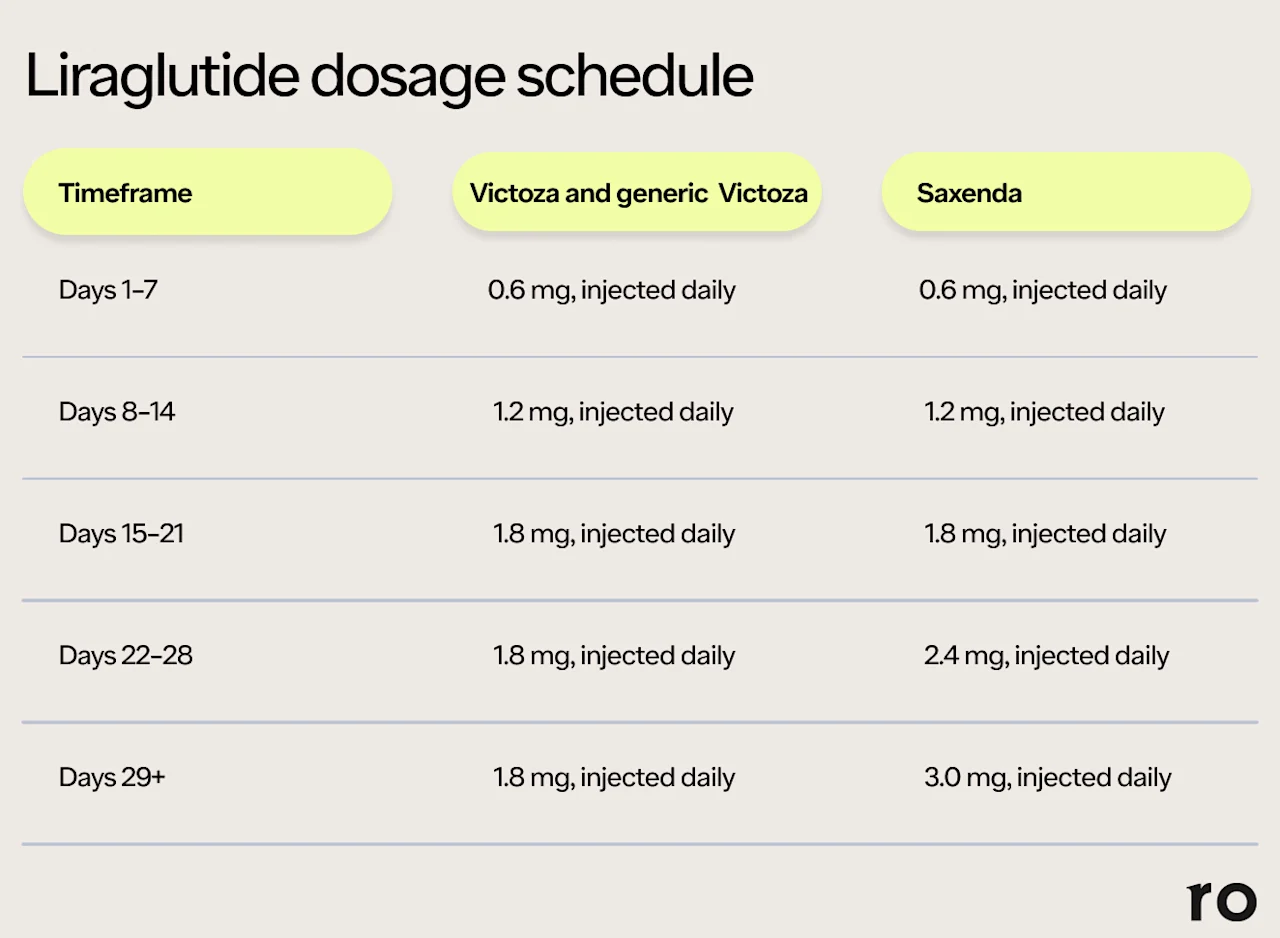
How to use liraglutide
Liraglutide is taken daily, at any time of day, with or without food. You inject liraglutide subcutaneously or under the skin of your stomach, thigh, or upper arm. You should rotate through the injection sites each day to give the area time to heal and avoid lumps or bumps under your skin.
Liraglutide comes in a pre-filled pen that contains multiple doses of the medication. Pen needles are not included with liraglutide and must be purchased or prescribed separately. Your healthcare provider should provide guidance on which pen needles to purchase. You’ll attach a new needle each time you take liraglutide. Before first use, liraglutide should be stored in the refrigerator at 36°F–46°F (2°C–8°C). Once you’ve opened the pen, you can keep it in the fridge or store it at room temperature (59°F–86°F) for up to 30 days.
When injecting liraglutide, always follow your healthcare provider’s medical advice and review the package insert included with the medication. Here’s a quick overview of how to use liraglutide:
Wash your hands with soap and water, and then dry them with a clean towel.
Take your liraglutide pen out of the refrigerator. Inspect the pen to confirm you have the right medication and that the liquid is clear, colorless, and free of particles.
Pull off the pen cap and wipe the rubber stopper with an alcohol swab.
Attach a new needle straight onto your pen, screw it on until secure, and pull off the outer and inner needle caps.
Turn the dose selector until the black line of your dose lines up with the pointer.
Insert the needle into the skin of your injection site at a 90-degree angle and press down on the dose button until the black line of 0 mg lines up with the pointer.
Keep the dose button pressed for six seconds to ensure you get a full dose of liraglutide.
Remove the pen from your skin.
Place the outer needle cap over the needle, unscrew it, and dispose of it in an FDA-cleared sharps disposal container. Then, put the pen cap back on your liraglutide pen.
How effective is liraglutide?
Liraglutide is effective at treating both type 2 diabetes and obesity. In a 56-week clinical trial, people who took liraglutide lost an average of 6.4 kg (14 pounds) with the 3 mg dose and 5 kg (11 pounds) with the 1.8 mg dose, compared to 2.2 kg (5 pounds) with placebo, with higher doses leading to greater weight loss.
In a study comparing liraglutide vs. exercise, those who took liraglutide lost weight, but those who combined liraglutide 3 mg daily with exercise lost the most, with an average 1-year weight loss of nearly 21 pounds. As for type 2 diabetes, lower doses of liraglutide have been shown to consistently reduce HbA1c, which is a measure of average blood sugar levels, by more than 1 percentage point, according to multiple clinical trials.
Clearly, liraglutide can help people control their blood sugar levels and lose weight. But how does it compare to other GLP-1s?
How effective is liraglutide compared to other GLP-1s?
When it comes to diabetes drugs and blood sugar control, liraglutide is in the middle of the pack. Studies have found that while liraglutide tends to be better than Byetta (exenatide) at controlling blood sugar levels in people with type 2 diabetes, both Ozempic and Mounjaro lower them to a larger extent.
When it comes to weight loss, liraglutide is bested by several newer GLP-1 injections for weight loss, including Mounjaro (off-label), Zepbound, and Wegovy. In a study comparing Saxenda vs. Wegovy, people taking the highest dosage of liraglutide lost 6.4% of their body weight in 68 weeks, while those taking Wegovy lost 15.8%.
Liraglutide side effects
Like other GLP-1s, liraglutide side effects are typically digestive in nature. The most common side effects of generic Victoza (liraglutide) include:
Nausea
Diarrhea
Vomiting
Decreased appetite
Upset stomach or indigestion
Constipation
Saxenda, a higher-strength form of liraglutide prescribed for weight loss, may cause additional common side effects. These include:
Injection site reactions (e.g. rash or redness)
Headache
Fatigue
Dizziness
Stomach pain
Increased lipase
Fever
Stomach flu
While rare, liraglutide can cause serious side effects. These include:
Pancreatitis
Severe hypoglycemia (low blood sugar)
Acute kidney injury
Allergic reactions
Acute gallbladder disease
Pulmonary aspiration during general anesthesia or deep sedation
Some people may be more likely to experience serious side effects when taking liraglutide, including individuals who take insulin, certain diabetes pills, or have a history of kidney or gallbladder problems. Talk to your healthcare provider about your current medical conditions, as well as any medications (prescription and over-the-counter) you are taking, before starting liraglutide. Because liraglutide delays gastric emptying, it may affect the absorption of any oral medications.
People with multiple endocrine neoplasia syndrome type 2 (MEN2) or with a personal or family history of medullary thyroid carcinoma (MTC) should not take liraglutide. People who are pregnant should not use liraglutide for weight loss.
Who is eligible for liraglutide?
Liraglutide is FDA-approved for different conditions, under different brand names. Victoza, as well as the generic form of liraglutide that recently became available, is approved to improve blood sugar control in adults and children aged 10 and older with type 2 diabetes.
Saxenda, a higher-strength version of liraglutide, is FDA-approved for weight loss and weight management in adults with obesity or with overweight and a weight-related comorbidity, such as high blood pressure or type 2 diabetes. It’s also approved for weight management in certain children aged 12 and older with obesity.
All forms of liraglutide should be used with a reduced-calorie diet and increased physical activity.
Before prescribing liraglutide, your healthcare provider will ask you about your personal and family medical history. They’ll also want a list of all medications and over-the-counter supplements you’re currently taking. This information helps your provider ensure that liraglutide will be safe for you, as some people may be at increased risk when taking the drug.
For example, liraglutide may not be safe for people who are pregnant or breastfeeding. Also, animal studies have found that liraglutide can increase the risk of thyroid tumors in rats and mice. While it is unknown whether liraglutide causes the same risk in humans, the drug is contraindicated in people with MEN2 or a personal or family history of MTC.
How much does liraglutide cost?
The cost of liraglutide depends on the version of the medication, as well as other factors such as location, preferred pharmacy, and insurance coverage (if any).
The list price of Saxenda is $1,349.02 per month.
The list price of Victoza is not as cut-and-dry, with the amounts differing based on dosage strength and pen quantity.
Two pens of the 0.6 and 1.2 mg doses: $543.51
Three pens of the 1.8 mg dose: $815.27
Keep in mind that the aforementioned costs are wholesale prices. So, the amount you pay at the pharmacy may be more or less, depending on your insurance coverage, discounts, and location.
Generic Victoza or liraglutide costs significantly less (especially when compared to the cost of other weight loss injections!). Though, keep in mind that the price may vary depending on the manufacturer (in addition to other factors, like location and preferred pharmacy). Here’s how much three pens (one month’s worth) of liraglutide cost at different pharmacies with a discount, according to GoodRx:
CVS | $423.23 |
Rite Aid | $186.09 |
Walmart | $757.53 |
Duane Reed | $245.50 |
*While prices were valid at the time of publication, they may vary based on date and location. For the most accurate estimates, refresh the GoodRx searches and enter your zip code.
If you have insurance, it may fully cover the cost of liraglutide, or you may only have to pay a copay, depending on the details of your plan. However, it may also not cover liraglutide at all. Insurers typically only cover a medication if you are taking it for an FDA-approved indication, so if you are taking generic Victoza off-label for weight loss, you may have to pay full price. Also, some insurance plans, such as Medicare, do not cover obesity medications, so if you are taking Saxenda and you have Medicare coverage, it may not be covered. Contact your insurance plan to understand if liraglutide is covered and what costs you’ll be responsible for.
Websites such as GoodRx, SingleCare, Optum Perks, and others offer pharmacy discount cards you can use to lower the cost of your Rx. The cards are free to download and use, but they cannot be combined with insurance. They can only be used if you are paying cash for your prescription.
Hear from Ro patients
Ro members taking branded GLP-1 medications were paid for their testimonials.
Bottom line
The December 2024 approval of generic Victoza (liraglutide) represents a significant milestone in making GLP-1 medications more accessible and affordable for people looking to manage their type 2 diabetes and lose weight. While liraglutide may not outperform newer GLP-1 options in efficacy, it offers a cost-effective alternative with proven benefits for both conditions.
For people paying cash, the Victoza generic can be a much more budget-friendly option than other GLP-1s. Generic liraglutide tends to cost significantly less than brand-name GLP-1 medications like Ozempic, Wegovy, and Zepbound when paying out-of-pocket.
Like other GLP-1 medications, liraglutide works by mimicking the GLP-1 hormone naturally produced by your body. GLP-1 slows gastric emptying, increases insulin production, and inhibits glucagon—all of which help control blood sugar and promote weight loss.
To take liraglutide, you inject it under the skin of your thigh, abdomen, or upper arm on a daily basis. Liraglutide typically starts at a low dose (0.6 mg) and gradually increases to a maintenance dose based on your healthcare provider's guidance. The maximum dose of generic Victoza is 1.8 mg, while for Saxenda it is 3 mg.
Liraglutide’s side effects are generally digestive in nature, similar to other GLP-1s. Common side effects include nausea, diarrhea, and vomiting. Rare but serious side effects include pancreatitis and kidney or gallbladder problems.
Liraglutide lowers blood sugar and body weight to a lesser extent than newer GLP-1s. While effective for diabetes and weight loss, liraglutide is less effective compared to medications like semaglutide (Wegovy, Ozempic) and tirzepatide (Mounjaro, Zepbound).
DISCLAIMER
If you have any medical questions or concerns, please talk to your healthcare provider. The articles on Health Guide are underpinned by peer-reviewed research and information drawn from medical societies and governmental agencies. However, they are not a substitute for professional medical advice, diagnosis, or treatment.
GLP-1 Important Safety Information: Read more about serious warnings and safety info.
Ozempic Important Safety Information: Read more about serious warnings and safety info.
Wegovy Important Safety Information: Read more about serious warnings and safety info.
Saxenda Important Safety Information: Read more about serious warnings and safety info.
Mounjaro Important Safety Information: Read more about serious warnings and safety info.
Zepbound Important Safety Information: Read more about serious warnings and safety info.
References
Alruwaili, H., Dehestani, B., & le Roux, C. W. (2021). Clinical Impact of Liraglutide as a Treatment of Obesity. Clinical Pharmacology: Advances and Applications, 13, 53–60. doi: 10.2147/CPAA.S276085. Retrieved from https://pmc.ncbi.nlm.nih.gov/articles/PMC7958997/
Alsugair, H. A., Alshugair, I. F., Alharbi, T. J., et al. (2021). Weekly Semaglutide vs. Liraglutide Efficacy Profile: A Network Meta-Analysis. Healthcare (Basel, Switzerland), 9(9), 1125. doi: 10.3390/healthcare9091125. Retrieved from https://pubmed.ncbi.nlm.nih.gov/34574899/
Collins, L. & Costello, R. A. (2024). Glucagon-like peptide-1 receptor agonists. StatPearls. Retrieved from https://www.ncbi.nlm.nih.gov/books/NBK551568/
DailyMed. (2025). Label: Liraglutide injection. Retrieved from https://dailymed.nlm.nih.gov/dailymed/drugInfo.cfm?setid=2100ec49-57b2-4330-ab5f-057ce9b7e4d0
Davies, M. J., Bergenstal, R., Bode, B., et al. (2015). Efficacy of Liraglutide for Weight Loss Among Patients With Type 2 Diabetes: The SCALE Diabetes Randomized Clinical Trial. JAMA, 314(7), 687–699. doi: 10.1001/jama.2015.9676. Retrieved from https://jamanetwork.com/journals/jama/fullarticle/2428956
GoodRx. (n.d.) Liraglutide generic drug. Retrieved from https://www.goodrx.com/liraglutide?label_override=liraglutide&dosage=3-pens-of-18mg-3ml&form=carton&quantity=1
Harris, K. B. & McCarty, D. J. (2015). Efficacy and tolerability of glucagon-like peptide-1 receptor agonists in patients with type 2 diabetes mellitus. Therapeutic Advances in Endocrinology and Metabolism, 6(1), 3–18. doi: 10.1177/2042018814558242. Retrieved from https://pmc.ncbi.nlm.nih.gov/articles/PMC4321868/
Hikma Pharmaceuticals. (2024). Hikma receives FDA approval and launches the generic version of Victoza®, Liraglutide, in the US. Retrieved from https://www.hikma.com/news/hikma-receives-fda-approval-and-launches-the-generic-version-of-victoza-liraglutide-in-the-us/
Lundgren, J. R., Janus, C., Jensen, S. B. K., et al. (2021). Healthy Weight Loss Maintenance with Exercise, Liraglutide, or Both Combined. The New England Journal of Medicine, 384(18), 1719–1730. doi: 10.1056/NEJMoa2028198. Retrieved from https://www.nejm.org/doi/10.1056/NEJMoa2028198
Mehta, A., Marso, S. P., & Neeland, I. J. (2017). Liraglutide for weight management: a critical review of the evidence. Obesity Science & Practice, 3(1), 3–14. doi: 10.1002/osp4.84. Retrieved from https://pmc.ncbi.nlm.nih.gov/articles/PMC5358074/
Novo Nordisk. (2023). Victoza Pricing. Retrieved from https://www.novopricing.com/victoza.html
Novo Nordisk. (2024). What is the list price for Saxenda and will it impact me?. Retrieved from https://www.novocare.com/obesity/products/saxenda/explaining-list-price.html
Rubino, D. M., Greenway, F. L., Khalid, U., et al. (2022). Effect of Weekly Subcutaneous Semaglutide vs Daily Liraglutide on Body Weight in Adults With Overweight or Obesity Without Diabetes. JAMA, 327(2), 138. doi: 10.1001/jama.2021.23619. Retrieved from https://jamanetwork.com/journals/jama/fullarticle/2787907
SingleCare. (2025). Liraglutide Coupons & Prices. Retrieved from https://www.singlecare.com/prescription/liraglutide
Straka, R. J., Keohane, D. J., & Liu, L. Z. (2017). Potential Clinical and Economic Impact of Switching Branded Medications to Generics. American Journal of Therapeutics, 24(3), e278–e289. doi: 10.1097/MJT.0000000000000282. Retrieved from https://pmc.ncbi.nlm.nih.gov/articles/PMC5417581/
Teva Pharmaceuticals. (2024). Teva Announces Launch of Authorized Generic of Victoza® (liraglutide injection 1.8mg), in the United States. Retrieved from https://ir.tevapharm.com/news-and-events/press-releases/press-release-details/2024/Teva-Announces-Launch-of-Authorized-Generic-of-Victoza-liraglutide-injection-1.8mg-in-the-United-States/default.aspx
Tilinca, M. C., Tiuca, R. A., Burlacu, A., et al. (2021). A 2021 Update on the Use of Liraglutide in the Modern Treatment of 'Diabesity': A Narrative Review. Medicina (Kaunas, Lithuania), 57(7), 669. doi: 10.3390/medicina57070669. Retrieved from https://pmc.ncbi.nlm.nih.gov/articles/PMC8307742/
U.S. Food & Drug Administration (FDA-a). (2024). FDA Approves First Generic of Once-Daily GLP-1 Injection to Lower Blood Sugar in Patients with Type 2 Diabetes. Retrieved from https://www.fda.gov/news-events/press-announcements/fda-approves-first-generic-once-daily-glp-1-injection-lower-blood-sugar-patients-type-2-diabetes
U.S. Food & Drug Administration (FDA). (2025). FDA List of Authorized Generic Drugs. Retrieved from https://www.fda.gov/drugs/abbreviated-new-drug-application-anda/fda-list-authorized-generic-drugs
U.S. Food & Drug Administration (FDA-b). (2024). Prescribing Information: Saxenda (liraglutide) injection, for subcutaneous use. Retrieved from https://www.accessdata.fda.gov/drugsatfda_docs/label/2024/206321s019lbl.pdf
Xie, Z., Yang, S., Deng, W., et al. (2022). Efficacy and Safety of Liraglutide and Semaglutide on Weight Loss in People with Obesity or Overweight: A Systematic Review. Clinical Epidemiology, 14, 1463–1476. doi: 10.2147/CLEP.S391819. Retrieved from https://pmc.ncbi.nlm.nih.gov/articles/PMC9738168/
Yao, H., Zhang, A., Li, D., et al. (2024). Comparative effectiveness of GLP-1 receptor agonists on glycaemic control, body weight, and lipid profile for type 2 diabetes: systematic review and network meta-analysis. BMJ (Clinical research ed.), 384, e076410. doi: 10.1136/bmj-2023-076410. Retrieved from https://pmc.ncbi.nlm.nih.gov/articles/PMC10823535/


